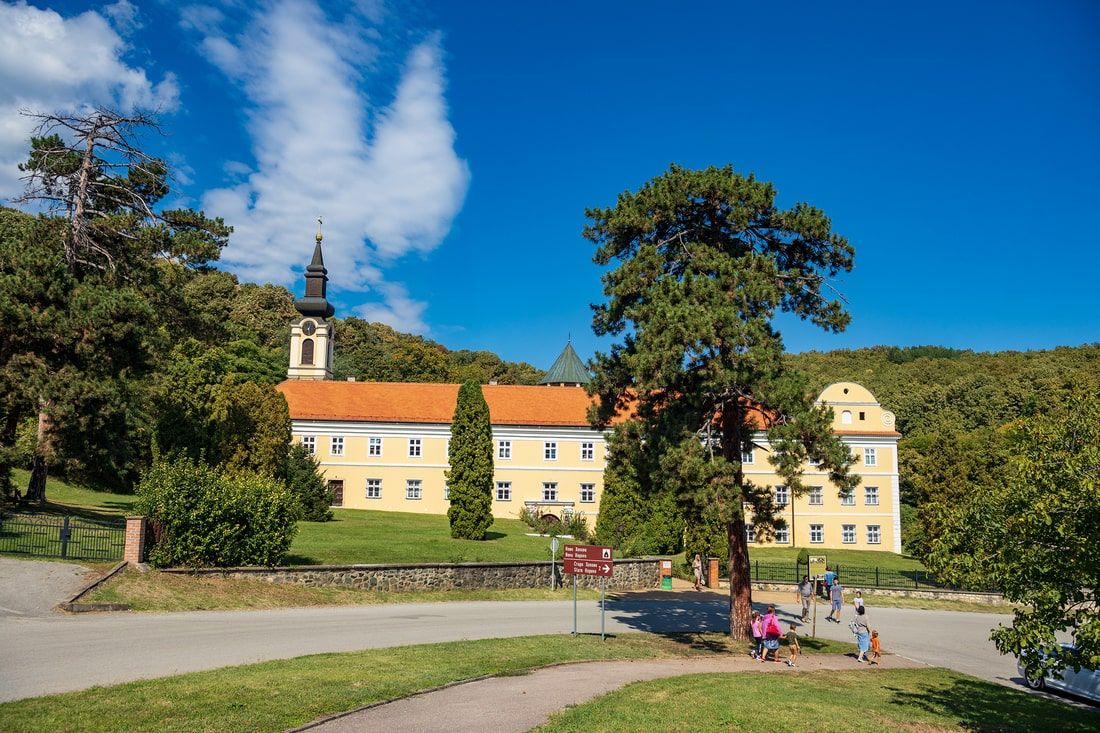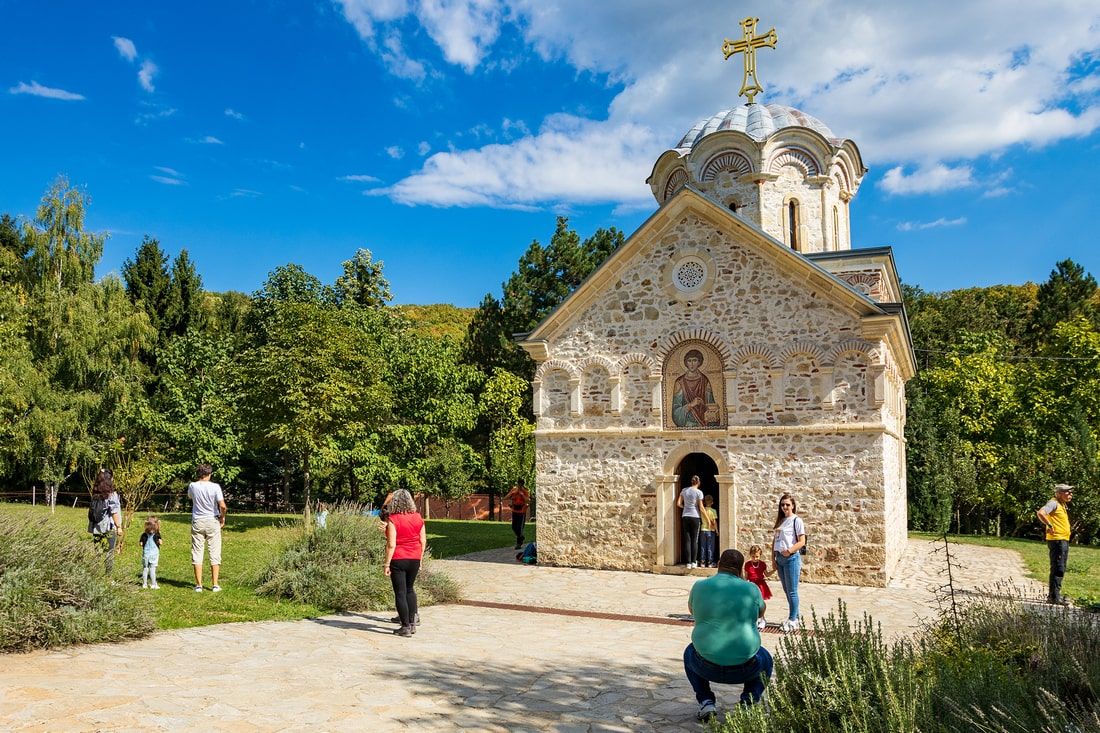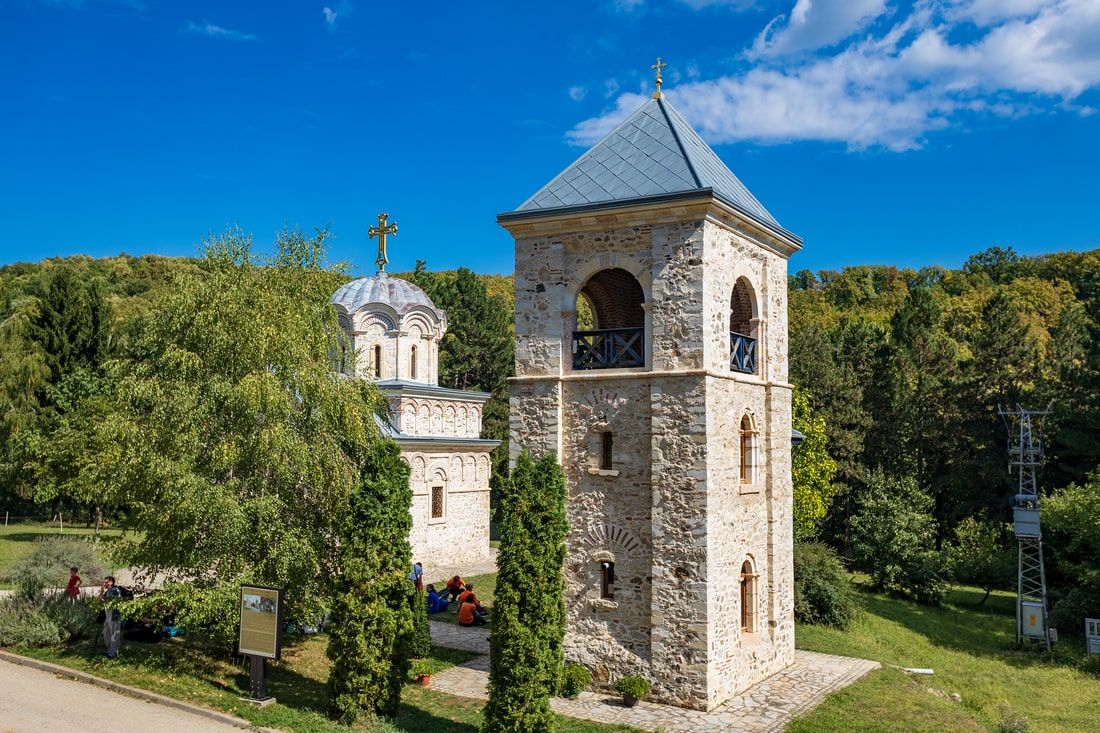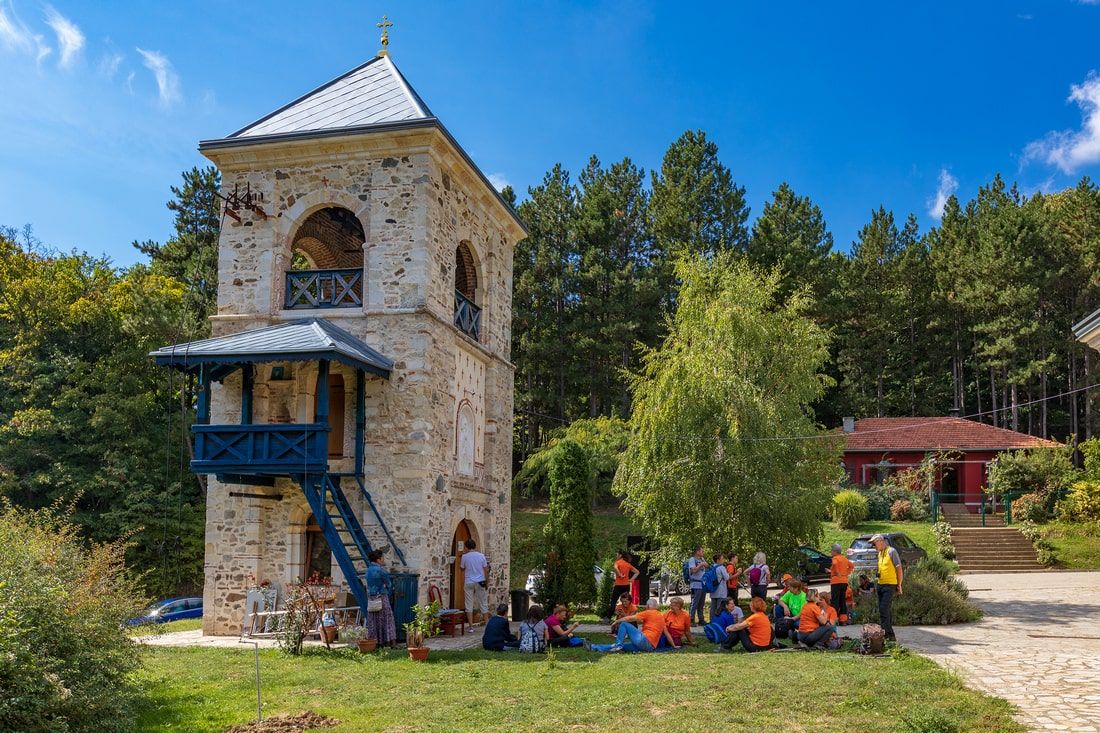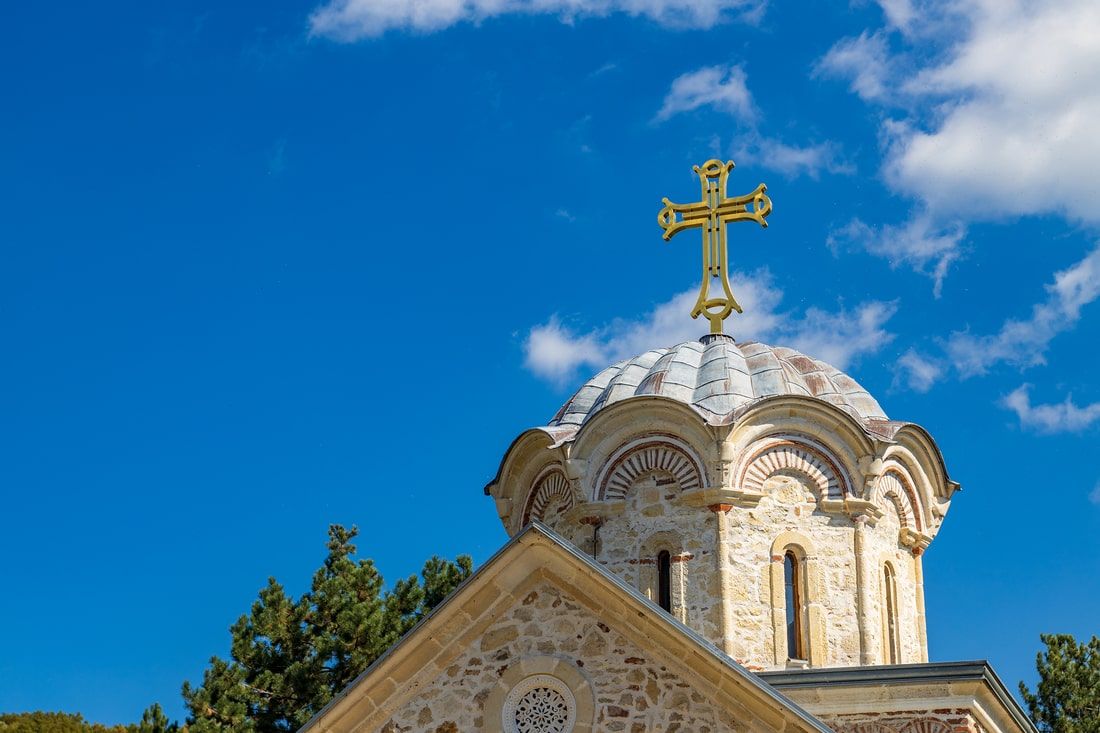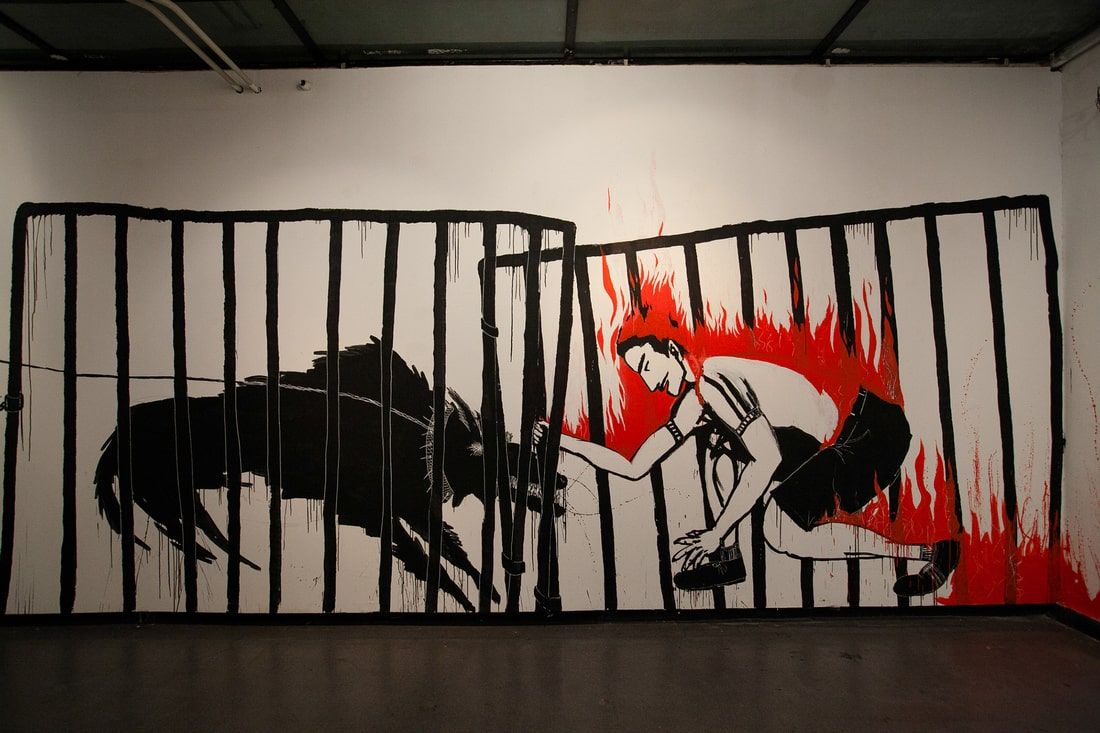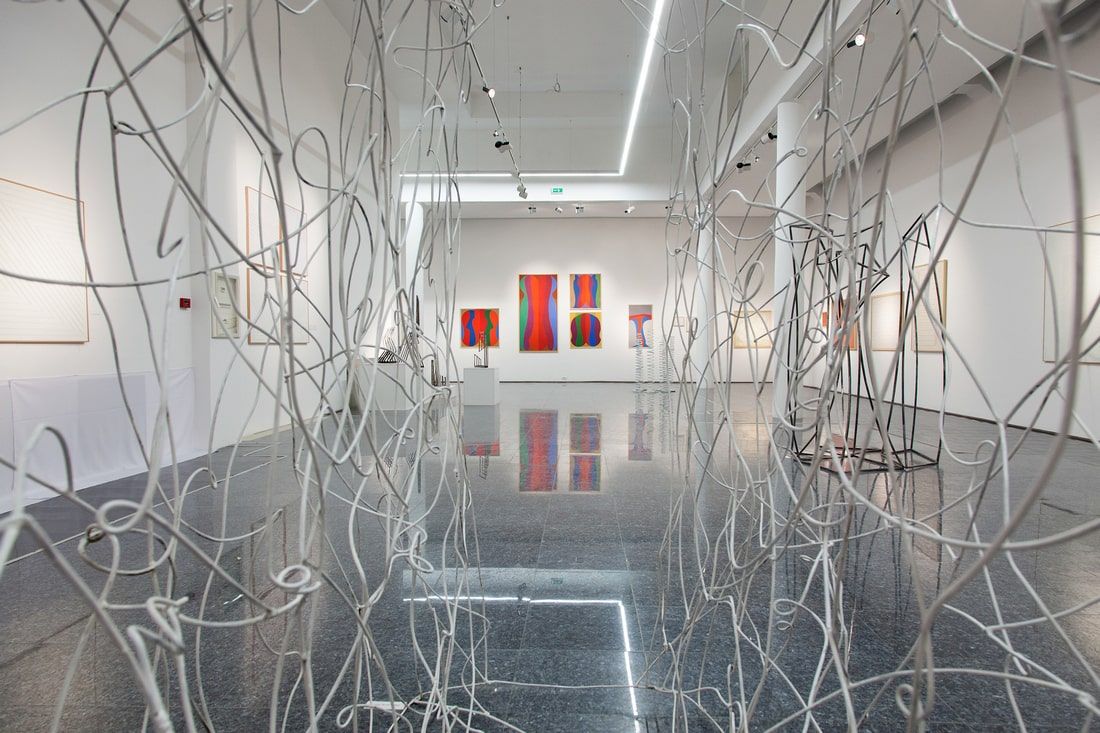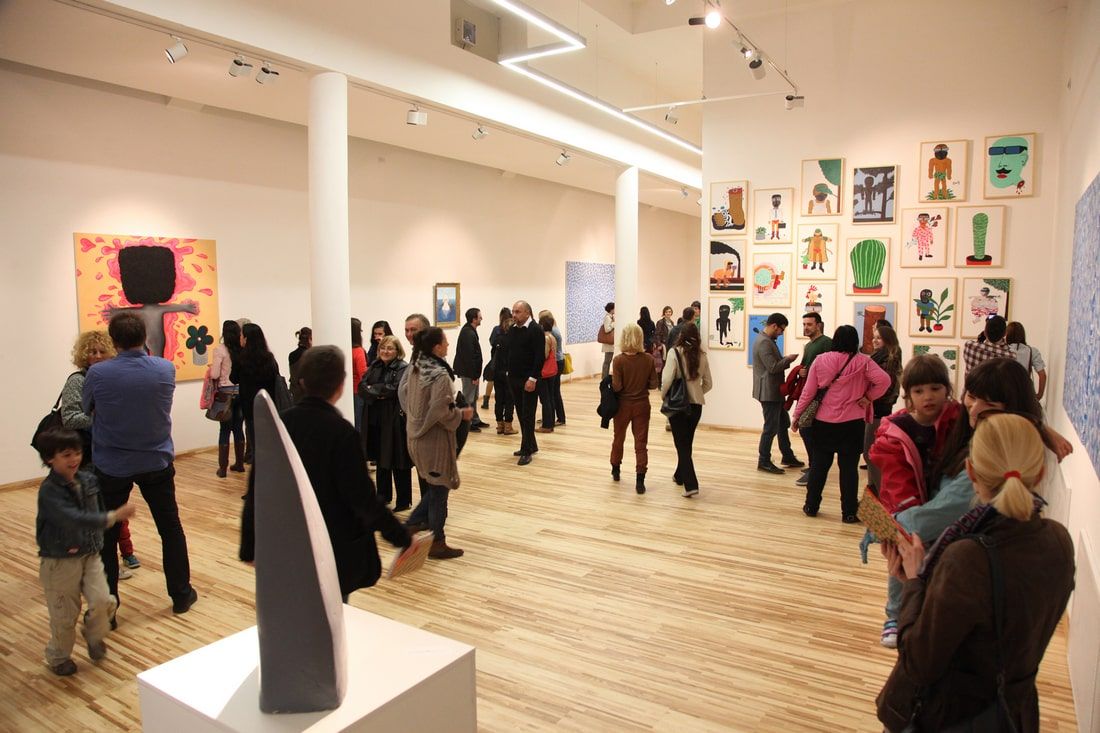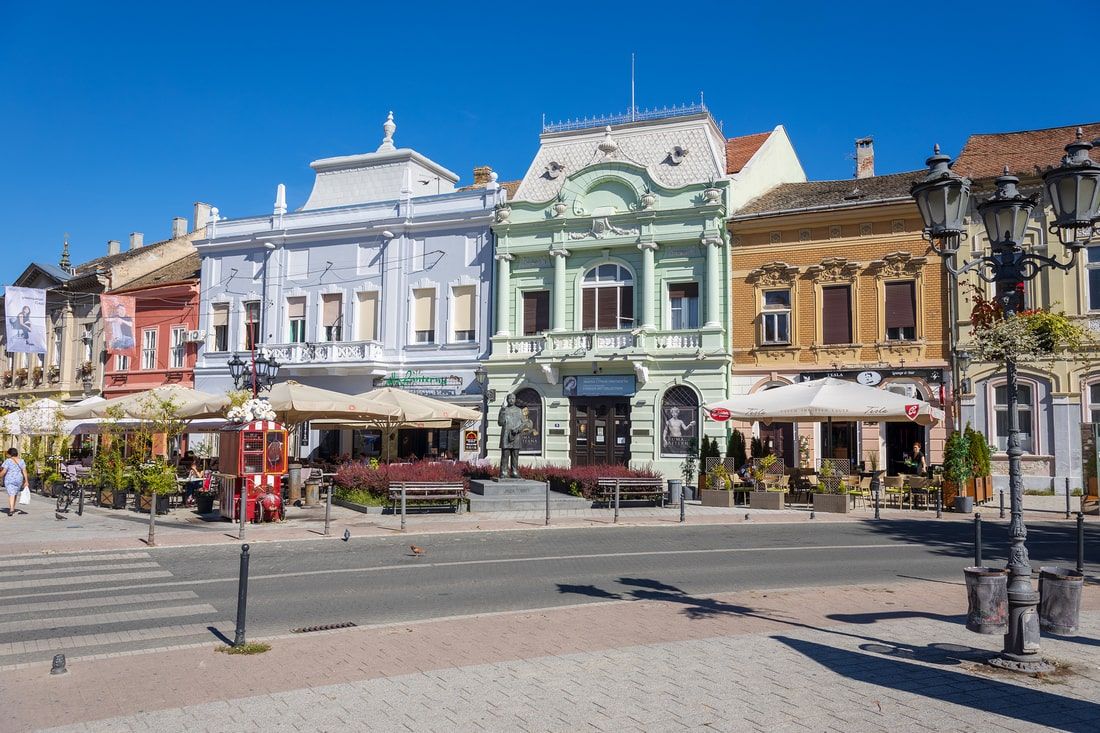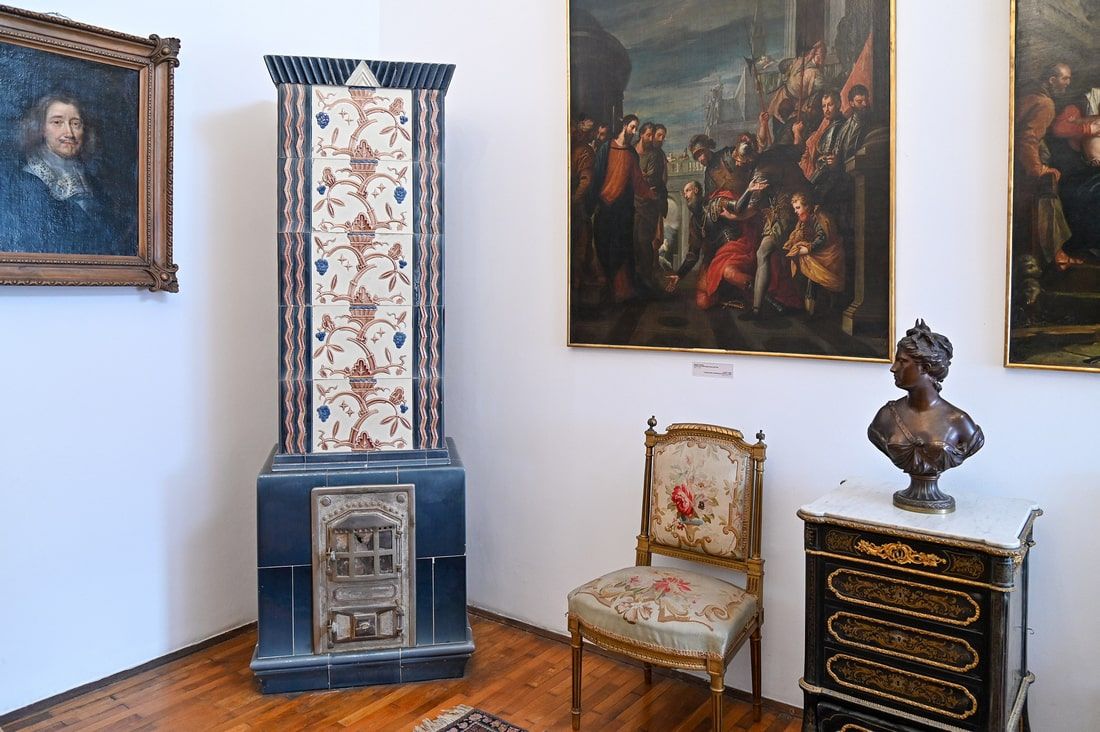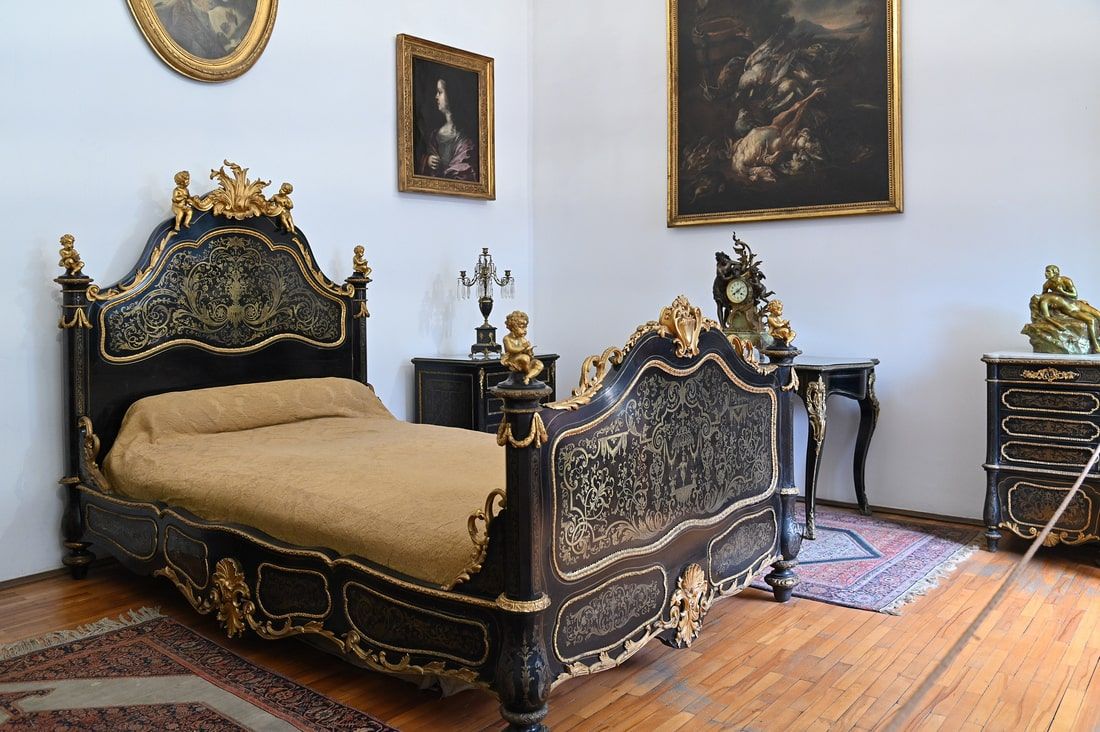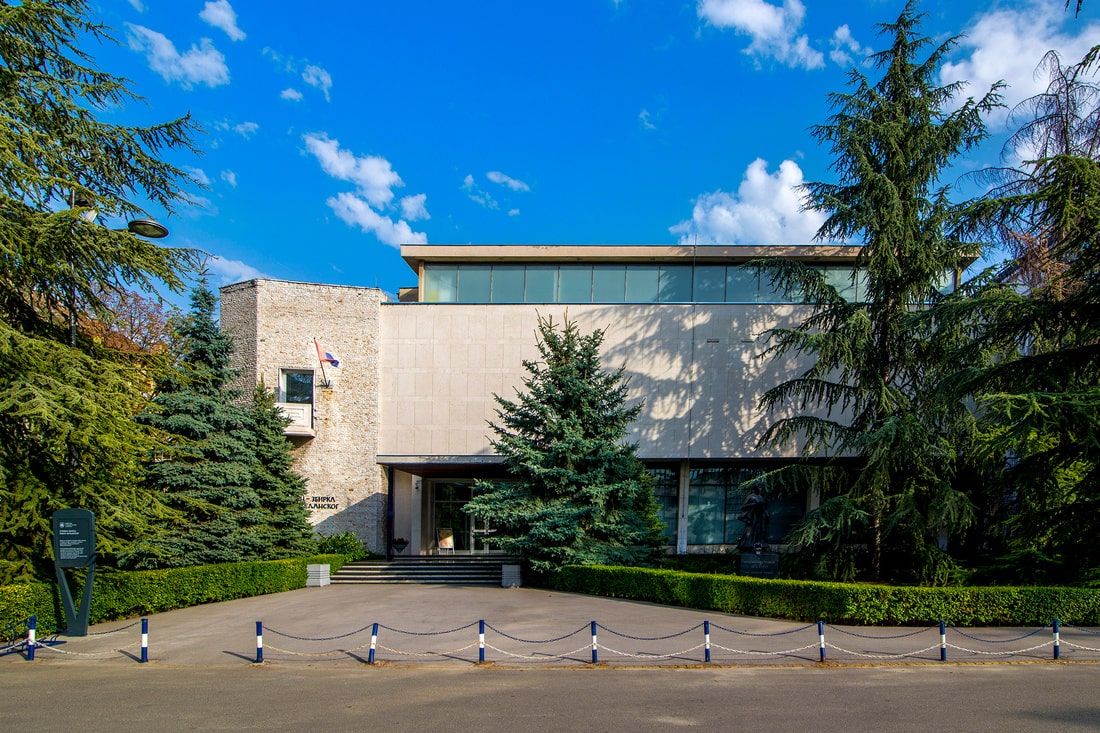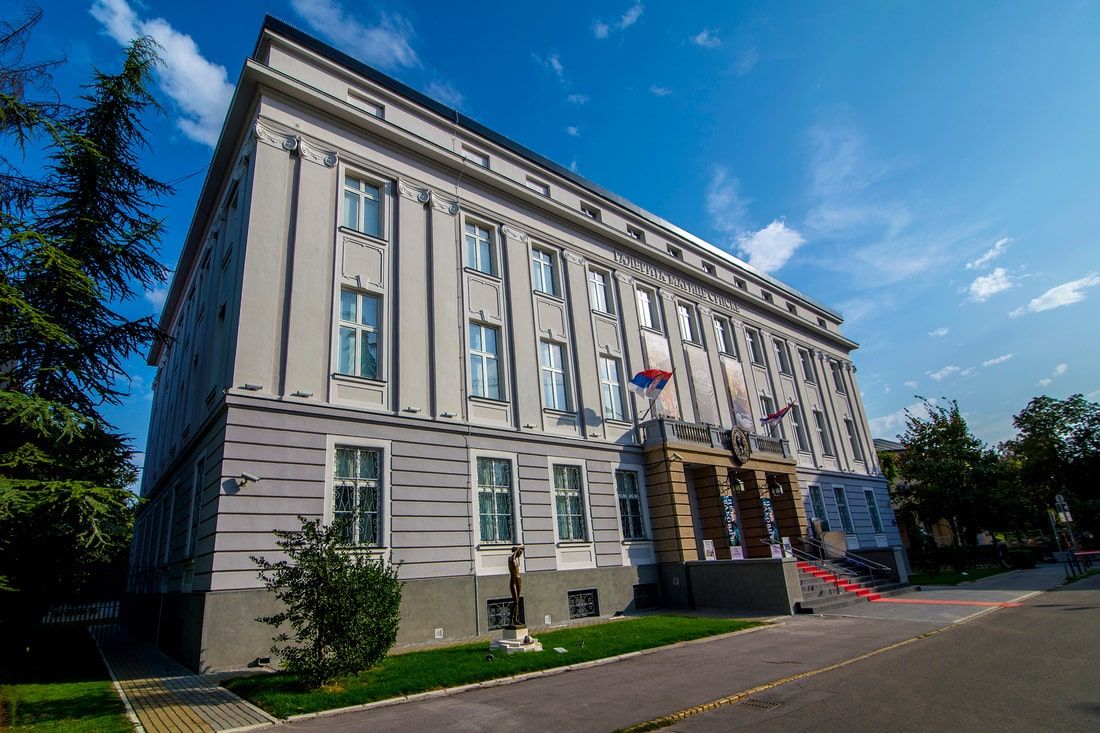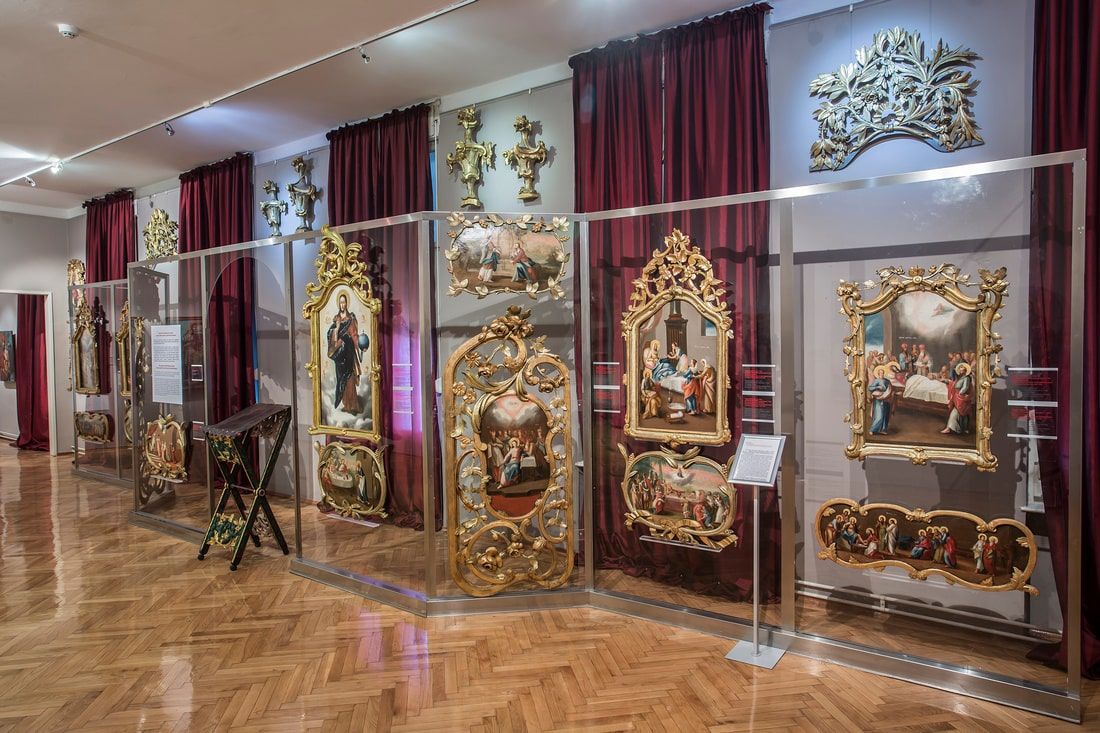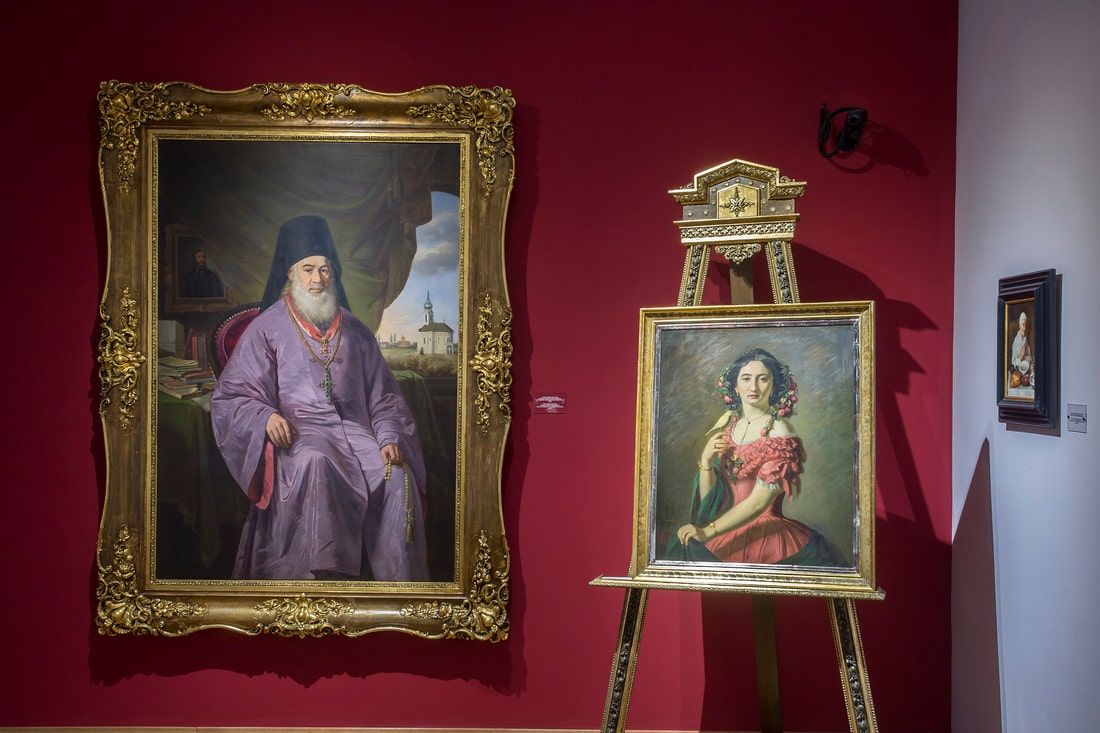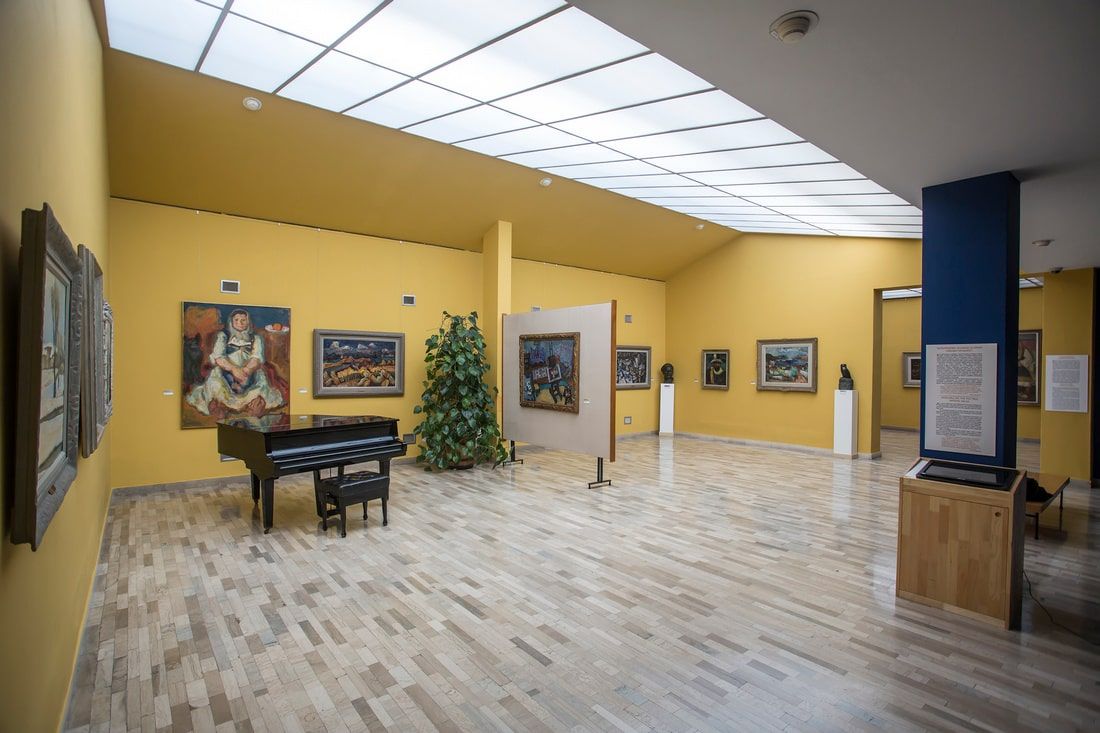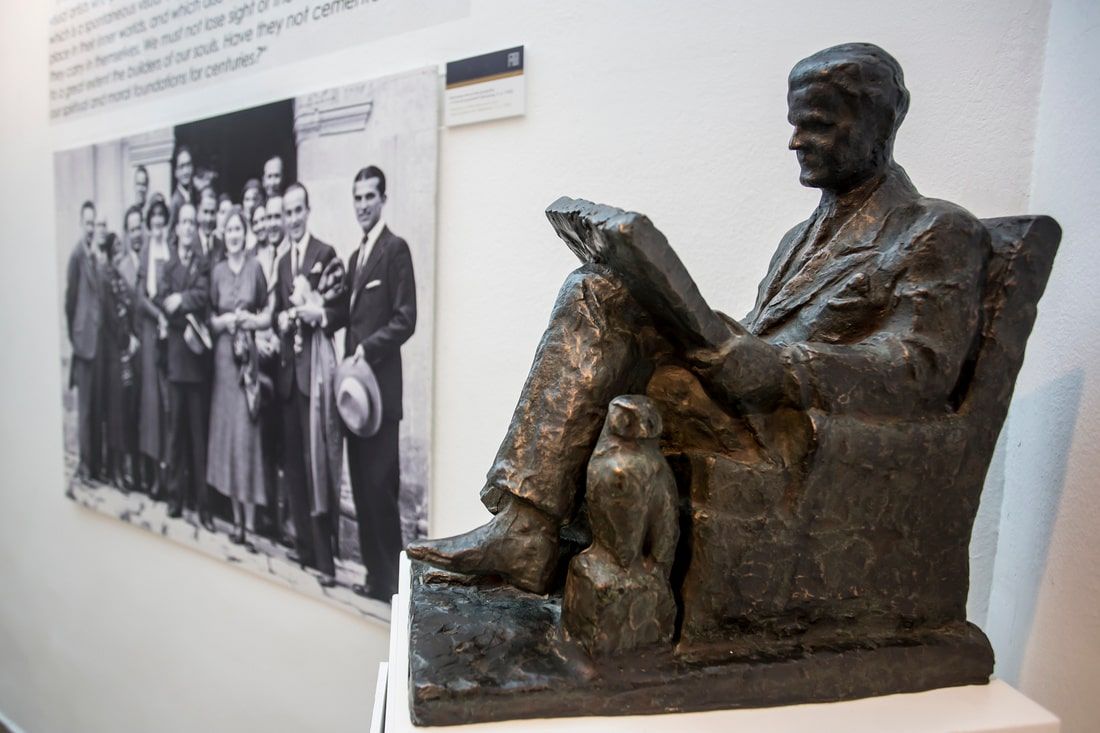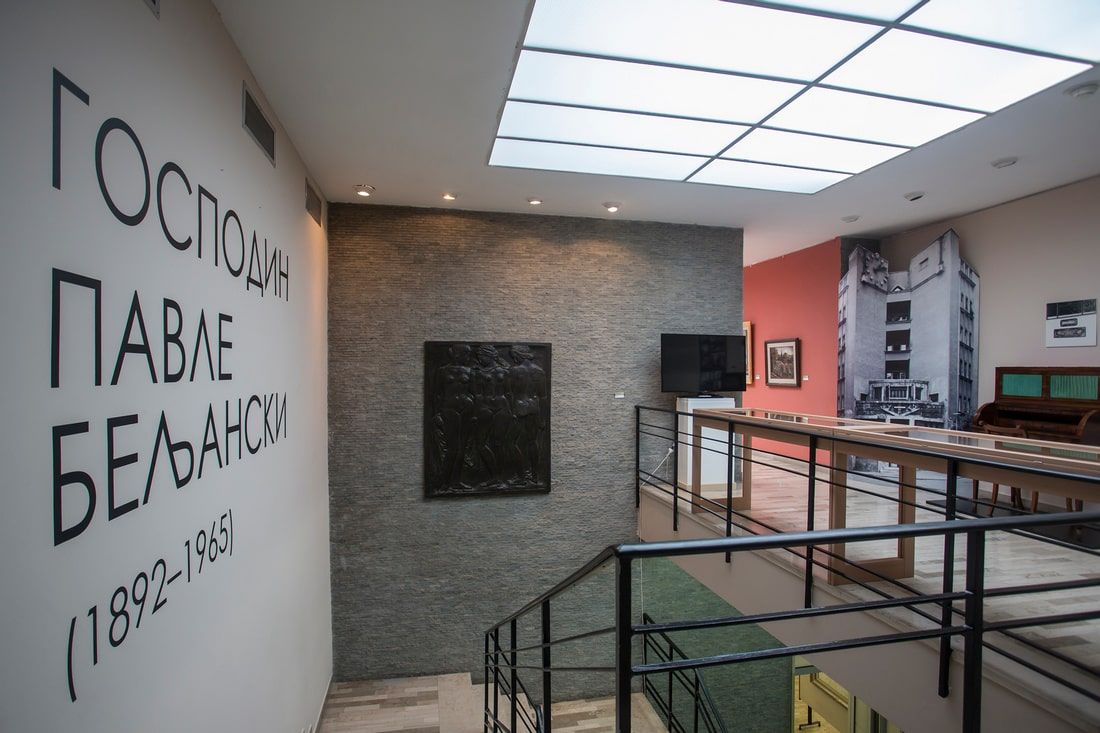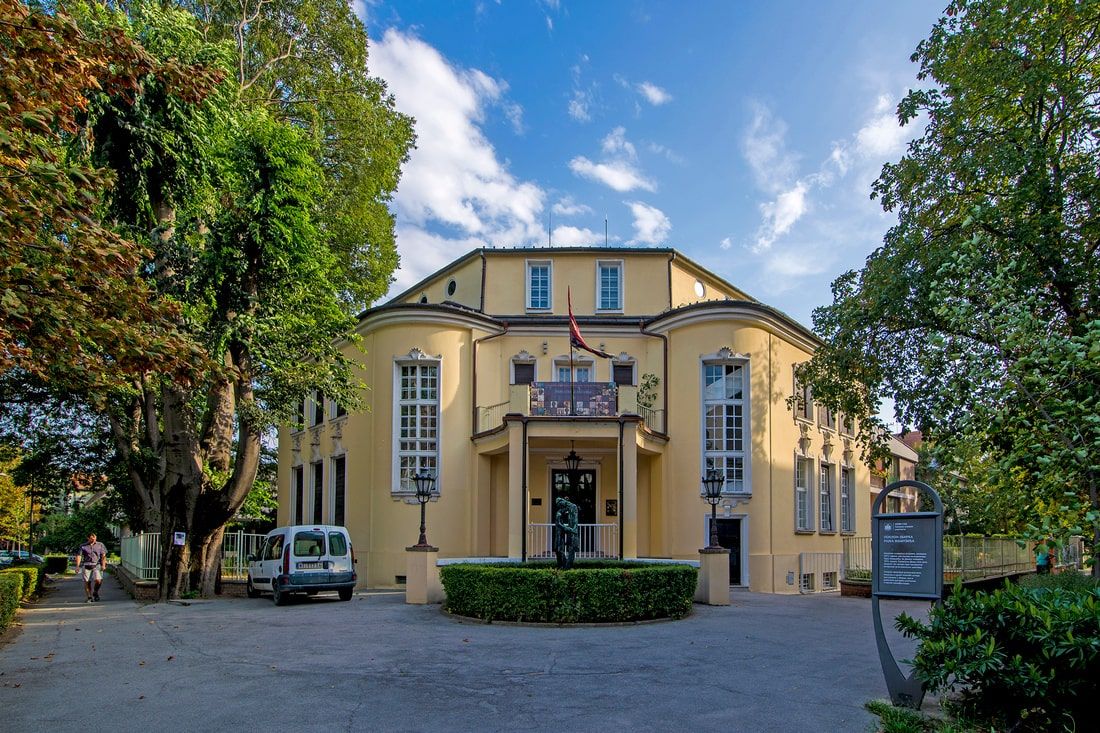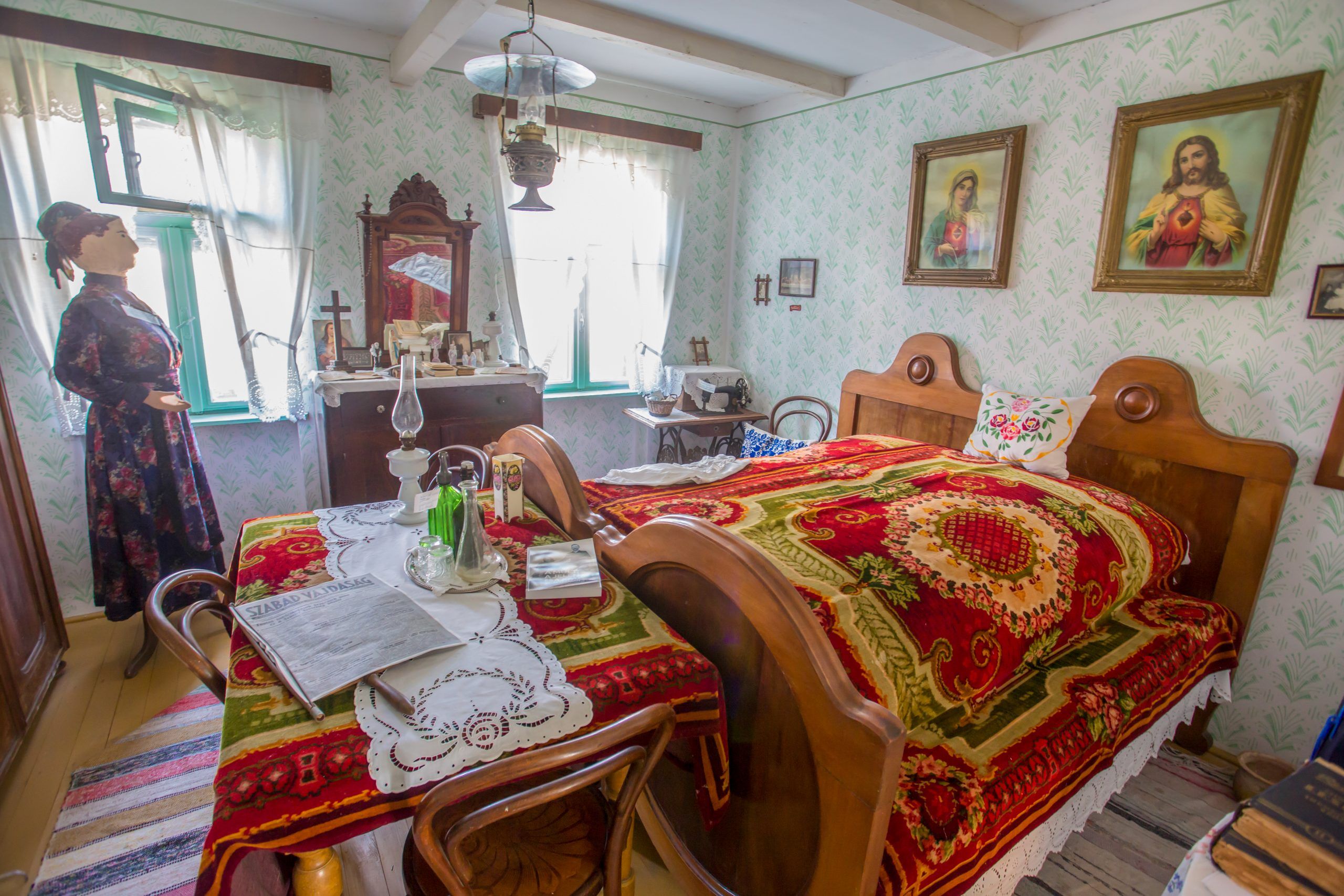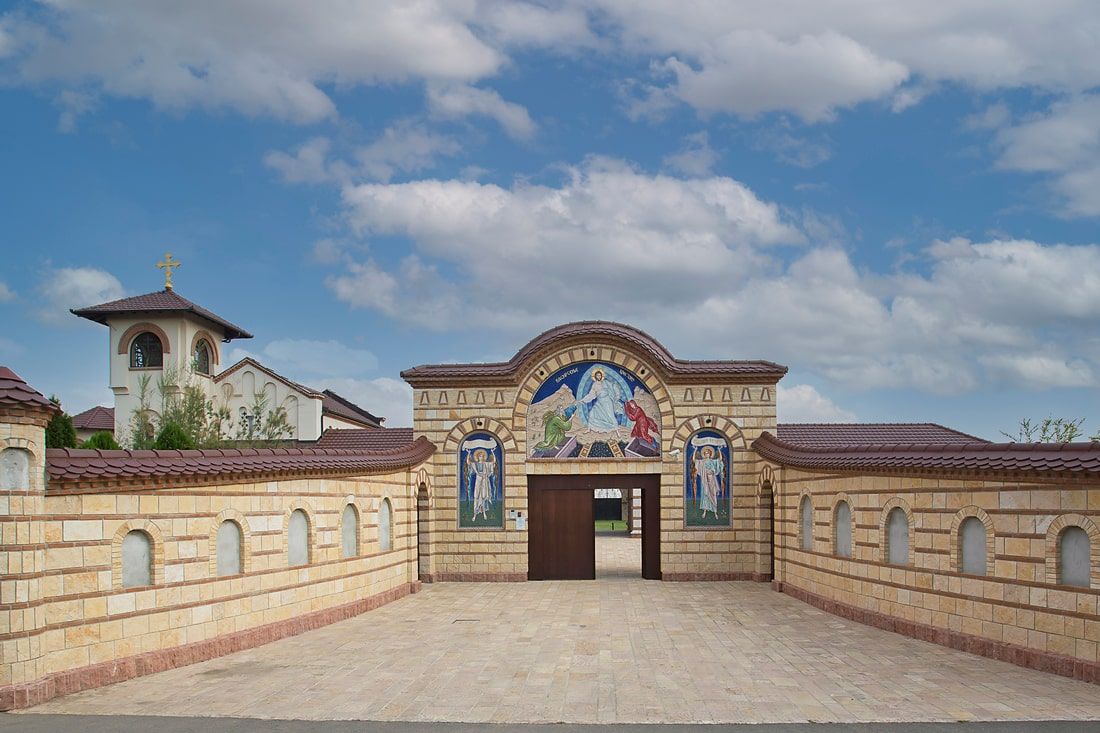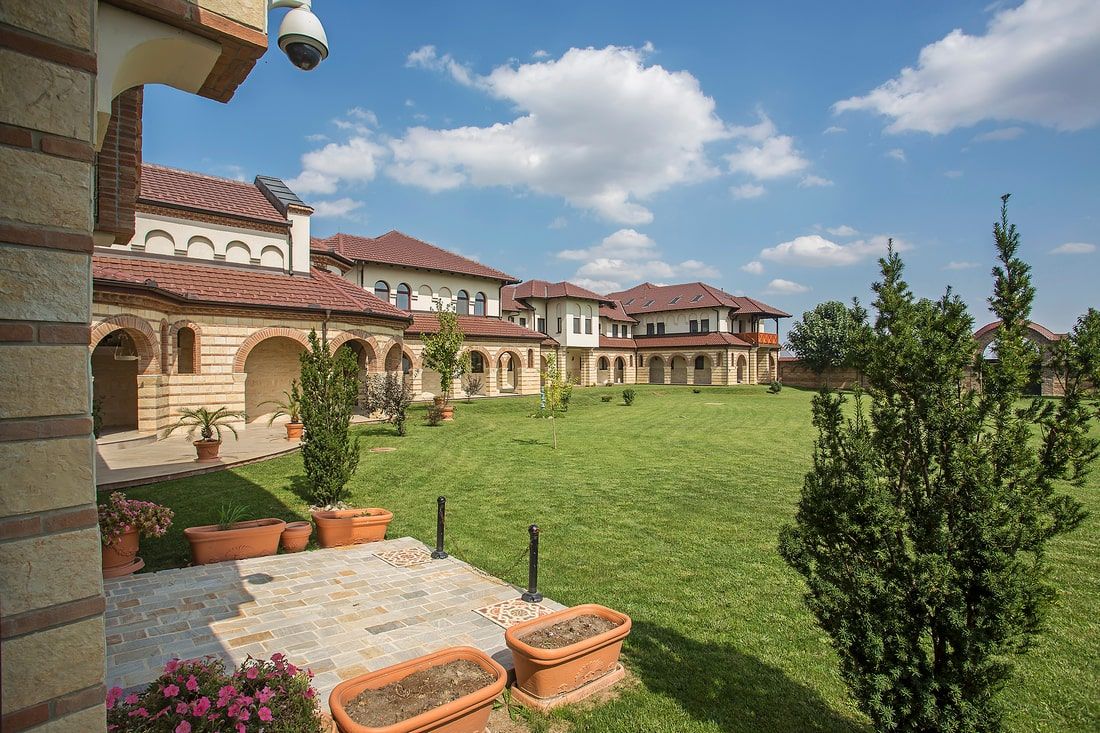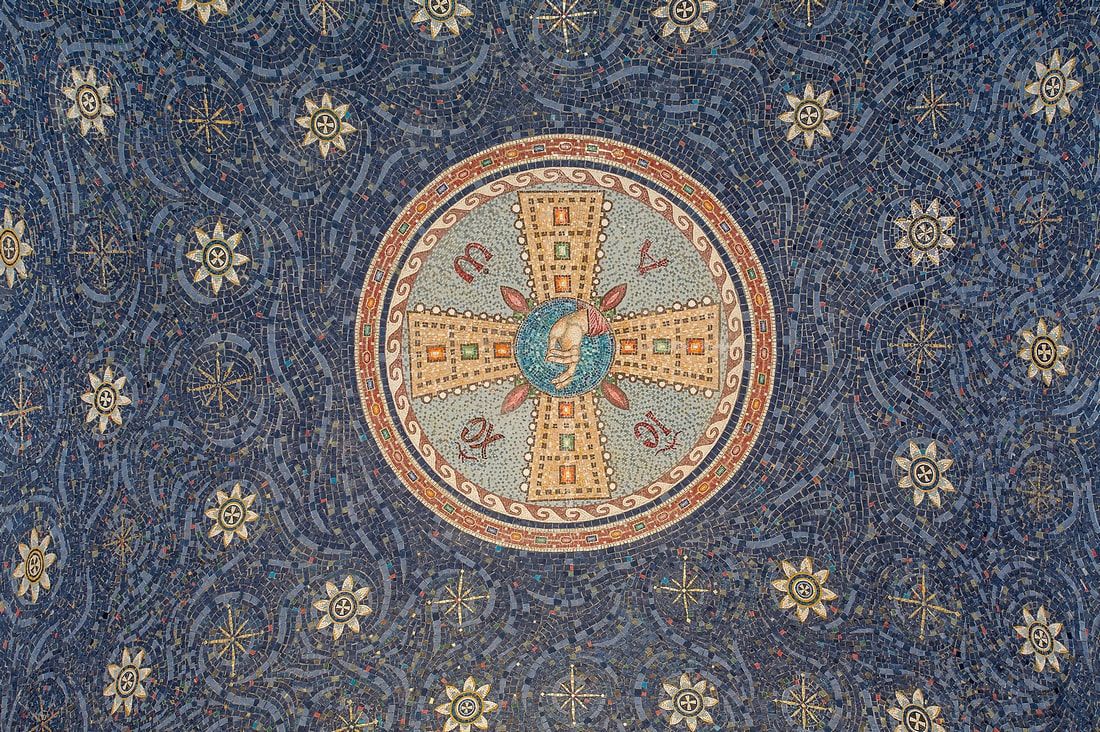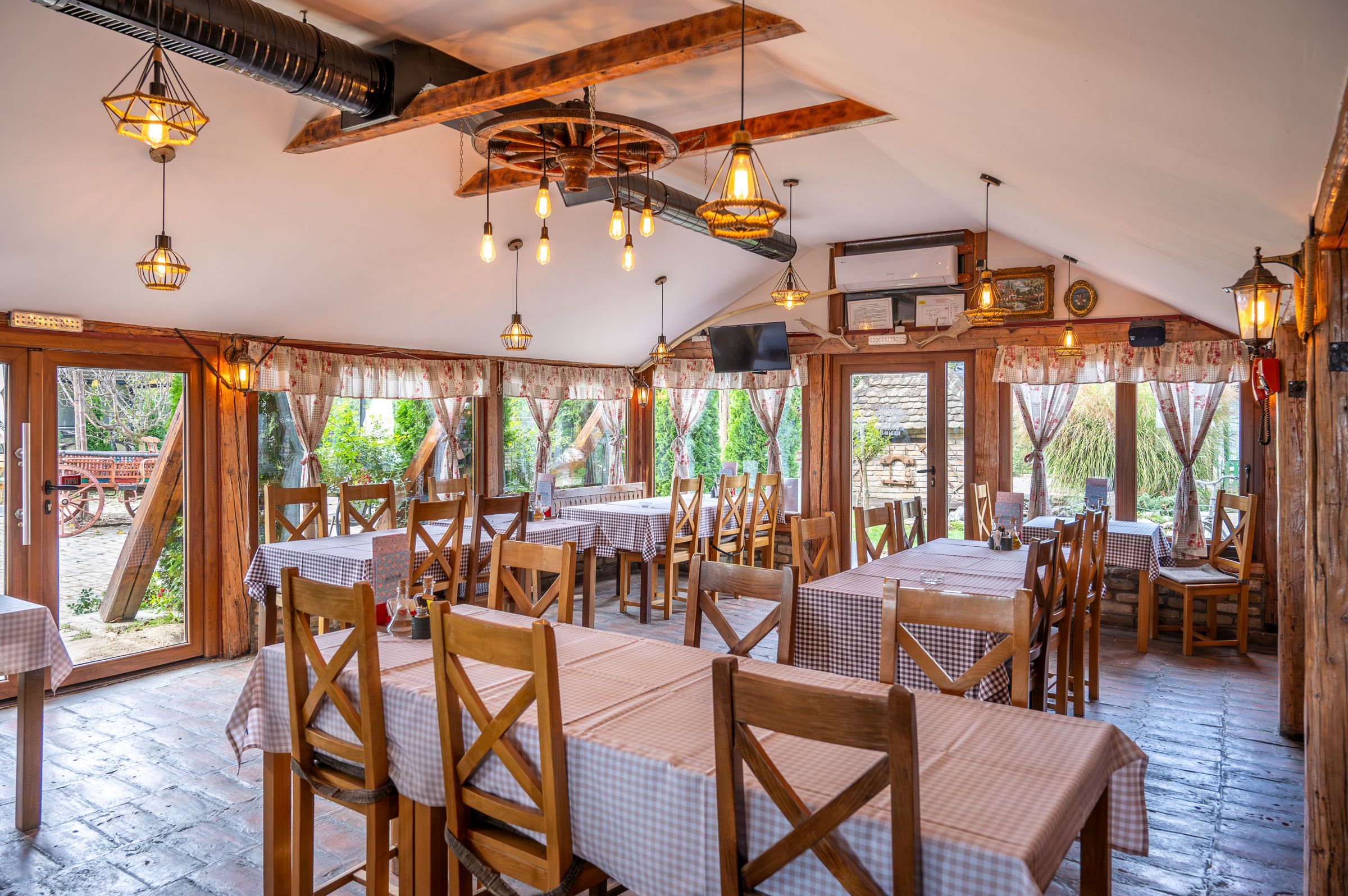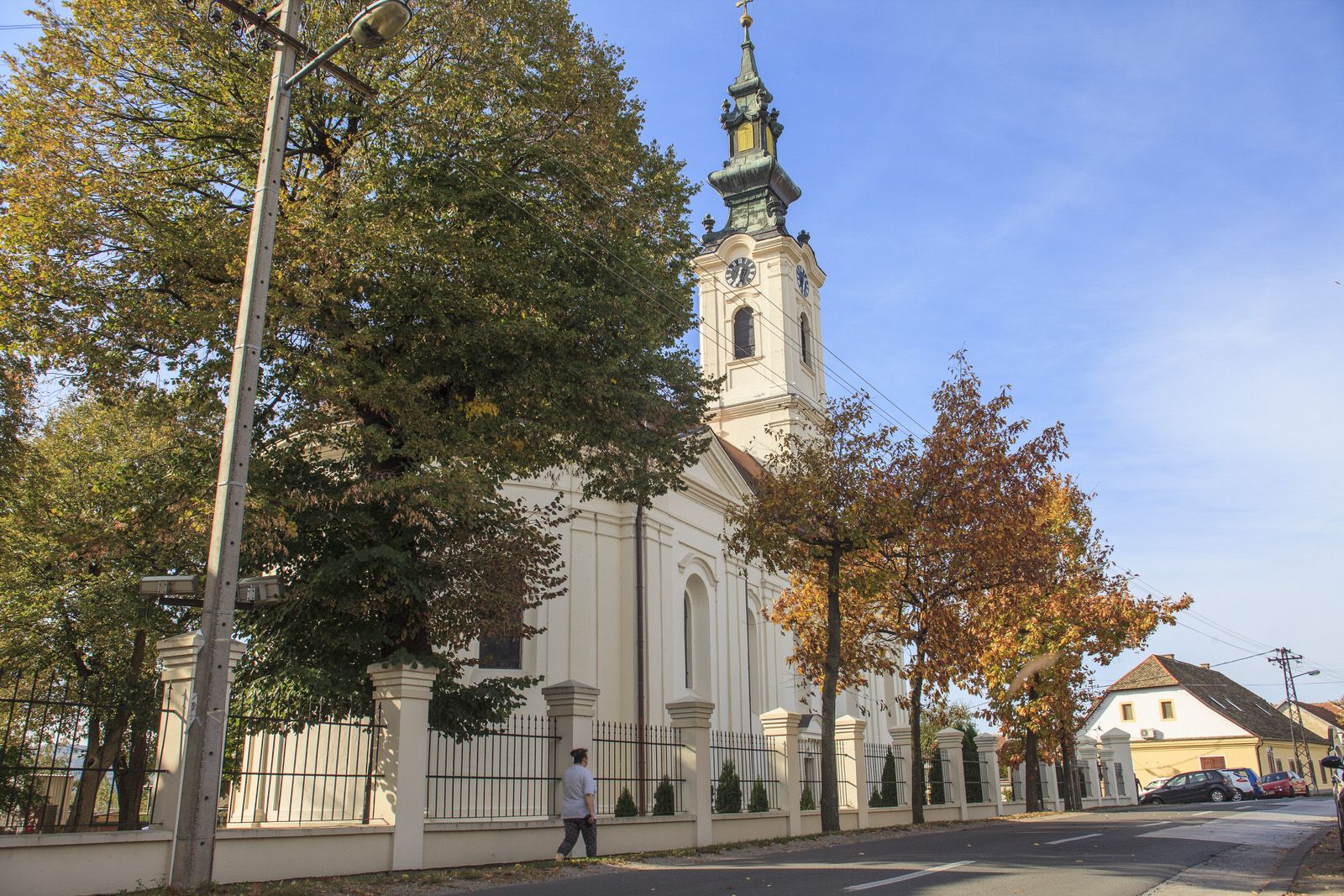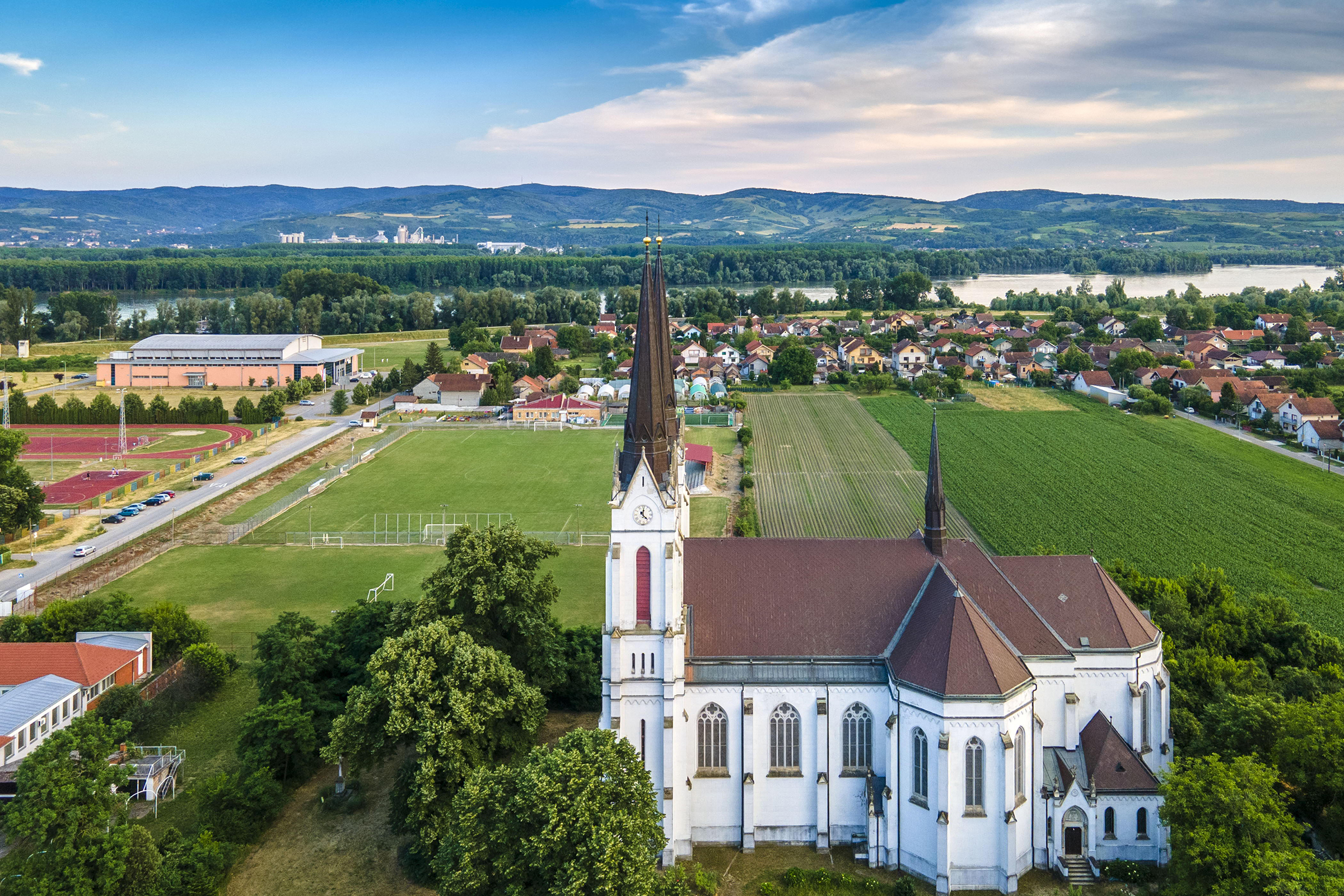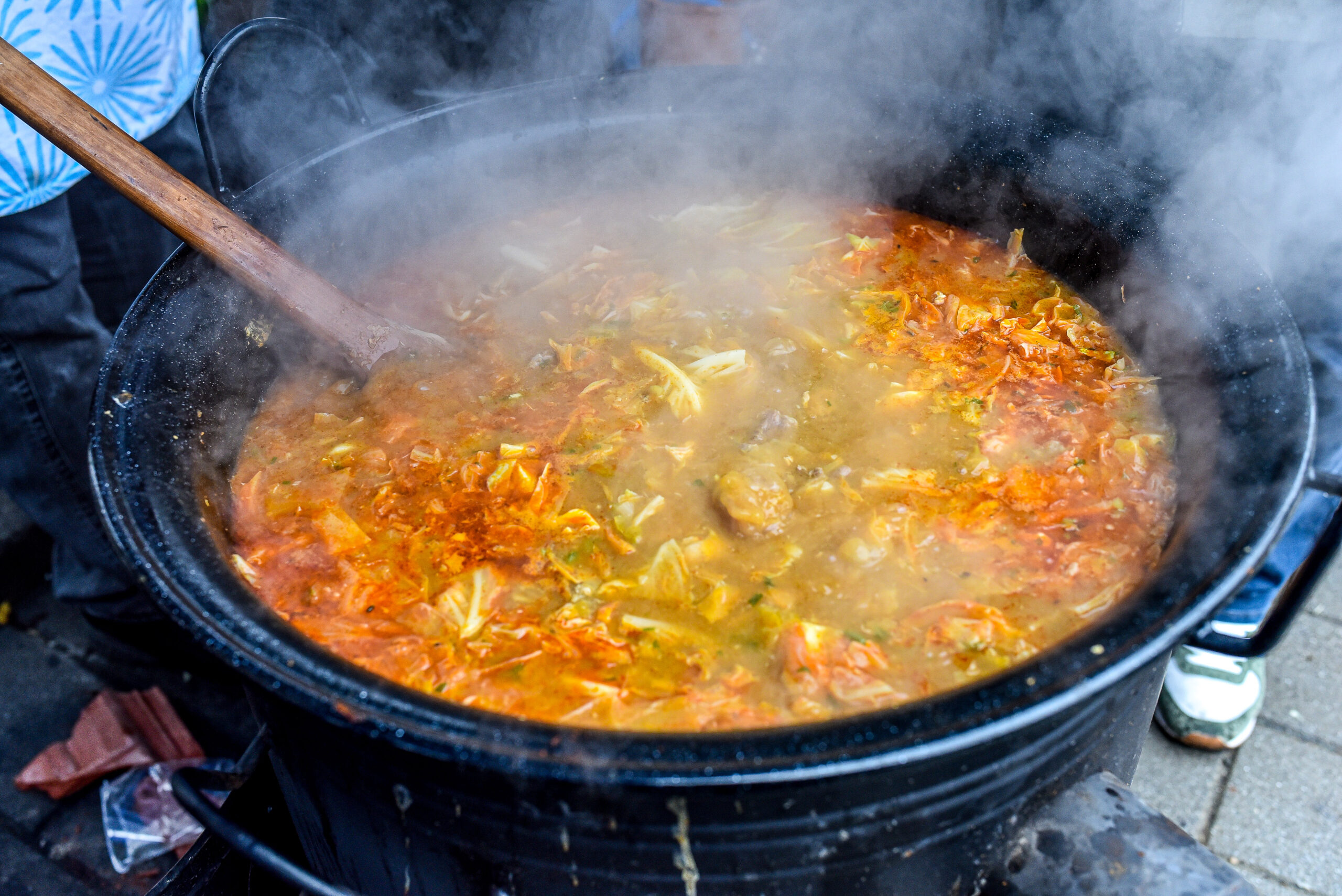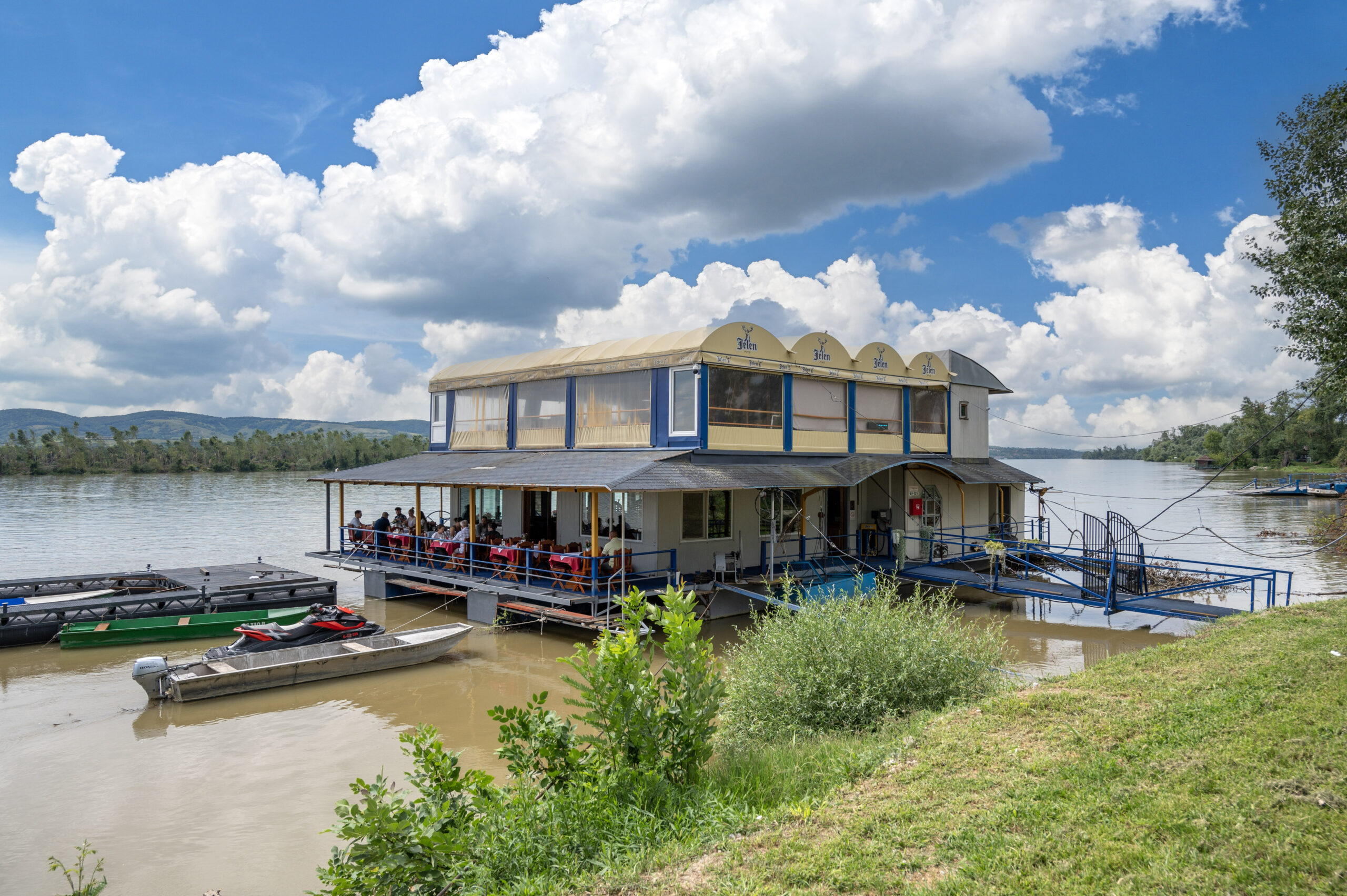52 Weekends - November
Staro and Novo Hopovo
The Novo Hopovo Monastery conquers with its beauty. For many art historians, the monastery complex has exceptional value because its builders managed to unite medieval Serbian architecture, Wallachian and even Islamic influences into a harmonious whole. In the monastery church, dedicated to St. Nicholas, fresco painting from two different periods of the 17th century has been preserved.
According to tradition, the Novo Hopovo Monastery is the endowment of Metropolitan Maksim (Branković), but the record above the entrance to the church says that the patrons were Lacko and Marko Jović from the vicinity of Budapest. The iconostasis made by one of the best Serbian Baroque painters, Teodor Dimitrijević Kračun, was damaged during the Second World War, and the contemporary one is the work of the nuns of Žiča.
Tradition says that Despot Đorđe Brankovic, later known as Metropolitan Maxim, built Staro Hopovo, and historical sources show that the monastery was first mentioned in 1546. On the foundations of the older temple, a new one was built in 1752, and its splendor and wealth was represented by a rococo iconostasis coated in gold. The monastery was damaged during World War II, and only some of the icons have been preserved. The renovated monastery complex that receives visitors today kept the harmonious integration into the natural environment from days past. It is about 2 km away from Novo Hopovo. At only 200m from the monastery church there is a spring arranged as a chapel whose water is considered to have healing properties.
For hiking lovers, it is recommended to take a walk along the popular “monastery” hiking trail. It is a marked circular path of eleven kilometers in length, which starts from the Info Center at Iriški venac, and connects the monasteries of Novo and Staro Hopovo and the Freedom Monument . You can find the map and trekking trails on the Fruška Gora National Park website https://www.npfruskagora.co.rs/lat/planinarenje/ We suggest you visit the National Park Info Center before taking a walk.
Near these monasteries are also the Kovačević Wine House, as well as KM and Krstašice wineries.
Text: Gordana Stojaković, Miloš Dunjić
Art side of Dunavska Street – Foreign Art Collection and Museum of Contemporary Art of Vojvodina
In addition to the Museum of Vojvodina, as the most representative museum institution in the city, Dunavska Street is also adorned by two extremely valuable institutions – the Collection of Foreign Art and the Museum of Contemporary Art of Vojvodina.
This collection of foreign art is one of the most important collections of foreign art in Serbia. The Baroque palace in Dunavska Street, built for Matilda Schoman in 1903 according to the design of Frantz Voruda, is today the home of the Foreign Art Collection, an annex to the Museum of the City of Novi Sad. For museological purposes, the palace was adapted to receive and present to the audience the legacy of Novi Sad collector and doctor Branko Ilić, who in 1966 donated a valuable collection of paintings and works of applied art from the 15th to the 20th century to Novi Sad and AP Vojvodina. The collection contains works of art created on Italian soil, paintings by Flemish-Dutch painters, works of Spanish, Central European, German, Far Eastern, Serbian and Russian art, icons, prints, watches, carpets, textiles, porcelain, glass, furniture and other works of applied art. Of particular value are the works of Italian, Flemish and French masters Giovanni Battista Langetti, Alexander Manjask, Sebastian Ritchie, Peter Klez, Hendrik van Balen, Sebastian Bourdon, Jan van Huysum and others, as well as works of applied art such as watches, silver, carpets, etc.
One should not miss the opportunity to see the collection of watches from the 18th and 19th centuries. The most valuable among the exhibits is a clock with a porcelain vase from the 18th century of the French workshop Sèvres, an outstanding example of art from the time of Louis XVI. There is also a clock with Apollo and Selena, a clock with a shepherdess and a clock on an alabaster stand, all from the 19th century.
The Museum of Contemporary Art of Vojvodina is a living place that gathers and encourages artists of different forms of expression to jointly interpret and affirm contemporary art flows and practices. At the same time, through the practice of exhibiting, this institution launches a dialogue and educates the general public about contemporary art of the second half of the 20th and the beginning of the 21st century, and about the works of domestic and foreign artists and art groups.
Ways of presenting works of art, whether they are paintings, graphics, installations, sculptures, video, photography, conceptual art, intermedia and digital works, accompany contemporary presentation possibilities so that in addition to exhibitions, they include activities, speech and music programs, film screenings, workshops, etc.
Text: Gordana Stojaković
Trip to the Gallery Square
The representative works exhibited in the Pavle Beljanski Memorial Collection provide an excellent view of Serbian modern art of the 20th century. The works of Nadežda Petrović and other modernists from the beginning of the 20th century, all the way to those of Milan Konjović and Ljubica Cuca Sokić, painters whom we still remember from very recently, will be in front of you in a magnificent series. The attention of visitors is often attracted by the paintings of Sava Šumanović, especially his impressions of the Srem landscape, which stand at the very top of modern painting in our country. In addition to paintings, sculptures, drawings and tapestries that diplomat and collector Pavle Beljanski bequeathed to the Serbian people, the Memorial Collection has two more integral parts – the Pavle Beljanski Memorial and the Artists’ Memorial.
To visit the Gallery of Matica Srpska, it is necessary to set aside a significant amount of time because you will encounter exhibits that represent the Serbian national property from the 16th to the 21st century. You can visit the Gallery’s settings by moving along the path taken by Serbian painting of the early, high and late Baroque, then Neoclassicism, Biedermeier, Romanticism, Historicism, Realism, Symbolism, Modernism… Whether it chooses part of the setting or to cross the entire offered path, it will be a journey into the center of the effort by which the intellectual and artistic elite of a small nation has won its own place within the European art of the modern age.
The basic fund of the Rajko Mamuzić Gift Collection consists of the works of artists who created and shaped the art scene of socialist Yugoslavia in the middle of the 20th century. These include: Miodrag Mića Popović, Jovan Soldatović, Petar Omčikus, Mladen Srbinović, Stojan Ćelić, Ksenija Divjak, Ljubica Cuca Sokić, Lazar Vujaklija, Matija Vuković, Milorad Bata Mihajlović, Mario Maskareli, Miloš Bajić, Kosara Bokšan, Edo Murtić, Danica Antić, Boško Petrović and others. A special value are the works created within the “Zadar Group”, an artistic commune created in 1947, which was a valuable endeavor in the search for a new creative expression outside of socialist realism.
After visiting the galleries, as a kind of refreshment and summarizing impressions, we suggest visiting the catering facilities on Mihajlo Pupin Boulevard.
Text: Gordana Stojaković
Kać and Budisava Fruitful Excursion Opportunities
What might interest you in Kać is the newly founded monastery of the Serbian Orthodox Church dedicated to the Resurrection of Christ. As soon as you step inside the monastery complex, parts of which are covered with mosaics, it will be clear that you are in a female monastery – a center for making mosaics, ceramics, icons and embroidery. In the mansion there is a masterfully picturesque chapel dedicated to the Nativity of the Most Holy Theotokos. On one of the walls, a procession of female saints of the Orthodox world is presented, which is a rare sight. The monastery complex is open for visits, and occasionally schools of skills that nuns practice are organized.
On the Old Kać Road, away from the noise and crowds, there is the Vojvođanski Salaš, which is known for its rich and specific gastronomic offer. On weekends, the guests of this salaš are entertained by tamburica players from 2 pm, and due to the high attendance, the reservation is mandatory.
Budisava (Hungarian – Tiszakálmánfalva, German – Waldneudorf) was founded in 1884. The center of Budisava is dominated by the Roman Catholic Church of the Assumption (of the Blessed Virgin Mary), built in the Neo-Gothic style in 1908. Near the church (first street on the right) there is an Ethno-house created by great efforts of Mr. Tibor Milanović. In this space, (house and garden) that were once used by the sexton and his family, items from everyday life have been collected, fully illustrating the life of the inhabitants of Budisava in the second half of the 19th and the first half of the 20th century. In the yard there is a collection of agricultural tools, tools that were used to cultivate the land, an old well, but also a series of photographs depicting the social life of the inhabitants between the two world wars.
Text: Gordana Stojaković
Futog’s Baroque Secrets
Futog is a community that administratively belongs to Novi Sad, but there are historical periods when its economic and even strategic importance was greater than that of Novi Sad. Materialized evidence of its former power that still captivates with beauty can be visited in the center of the town. In the old part of Futog there is the Serbian Orthodox Church of the Saint Cosmas and Damian. It was built in 1776 in the Baroque style. The iconostasis of the church is the work of one of the most important Serbian painters of the 18th and 19th centuries, Arsenije Teodorović. The wall paintings are the work of Janko Halkozović, who relied on the experiences of Byzantine and Italian Renaissance painting. The temple also has a valuable collection of icons by the Novi Sad painter Pavle Simić, whose artistic expression is associated with Nazarene painting.
At the beginning of the new part of Futoga, a striking edifice of the Roman Catholic Church of the Sacred Heart of Jesus rises, built on the site of an older temple, dedicated to the Holy Trinity. The new church was built in the pseudo-Gothic style by the Kotek count family at the beginning of the 20th century. The Roman Catholic Church of the Heart of Jesus has magnificent stained glass windows and a powerful organ. In the Church, in a glass sarcophagus, the relic of St. Eugene is kept. He was a martyr from the first Christian times, and his body rests in the Roman catacombs donated by Pope Pius VI to the Church of the Most Holy Trinity in 1777. Next to the church is the Parish Palace.
In the immediate vicinity of the Roman Catholic temple is the Baroque Castle Hadik, built in 1777 by the Austrian Field Marshal and chairman of the Vienna War Council, Count Andreas Hadik. At the beginning of the 19th century, it became the property of the Kotek family. There is a legend that, at the time when the manor was owned by the Counts of Kotek, Archduke Franz Ferdinand and his wife Sofia Kotek were guests there just before the Sarajevo assassination, as well as that this is where Johann Strauss the Younger composed “The Beautiful Blue Danube”. Today, this elegant building houses the Agricultural School.
You can finish your tour of Futog in the Splav Plavi Dunav čarda, cross the Danube by ferry, and start discovering wine delights in the wineries of Beočin, Čerević and Banoštor.
Futog is especially recognizable for the production of cabbage, which is mentioned in written sources as early as the 16th century. A specific cabbage variety is protected as a product with geographical origin. In honor of cabbage, every year at the beginning of November, the event Futoška kupusijada (Futog Cabbage Fest) is organized, where producers are presented, competitions in the preparation of cabbage dishes and the selection of the heaviest heads of cabbage are organized, with a rich cultural and entertainment program.
Text: Gordana Stojaković, Miloš Dunjić

